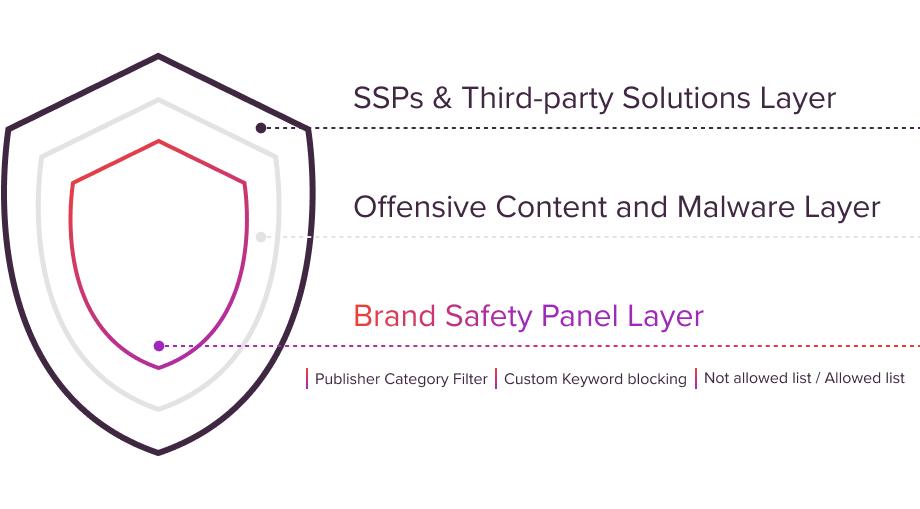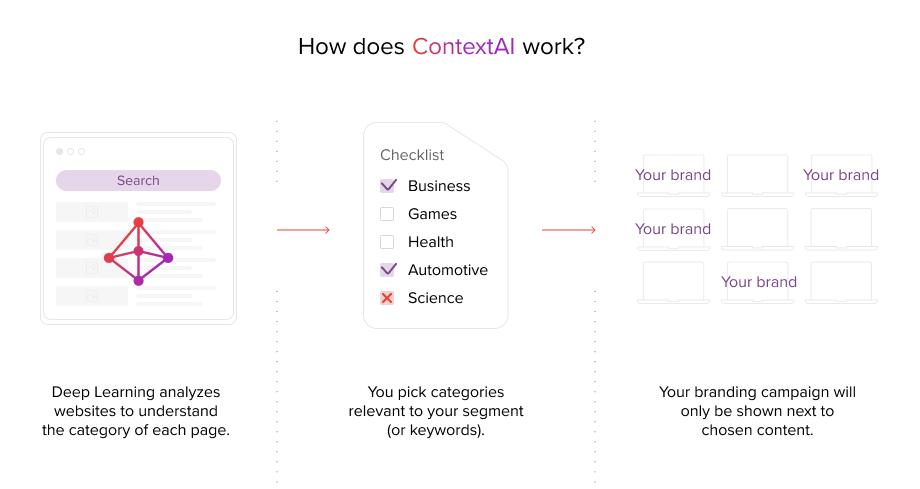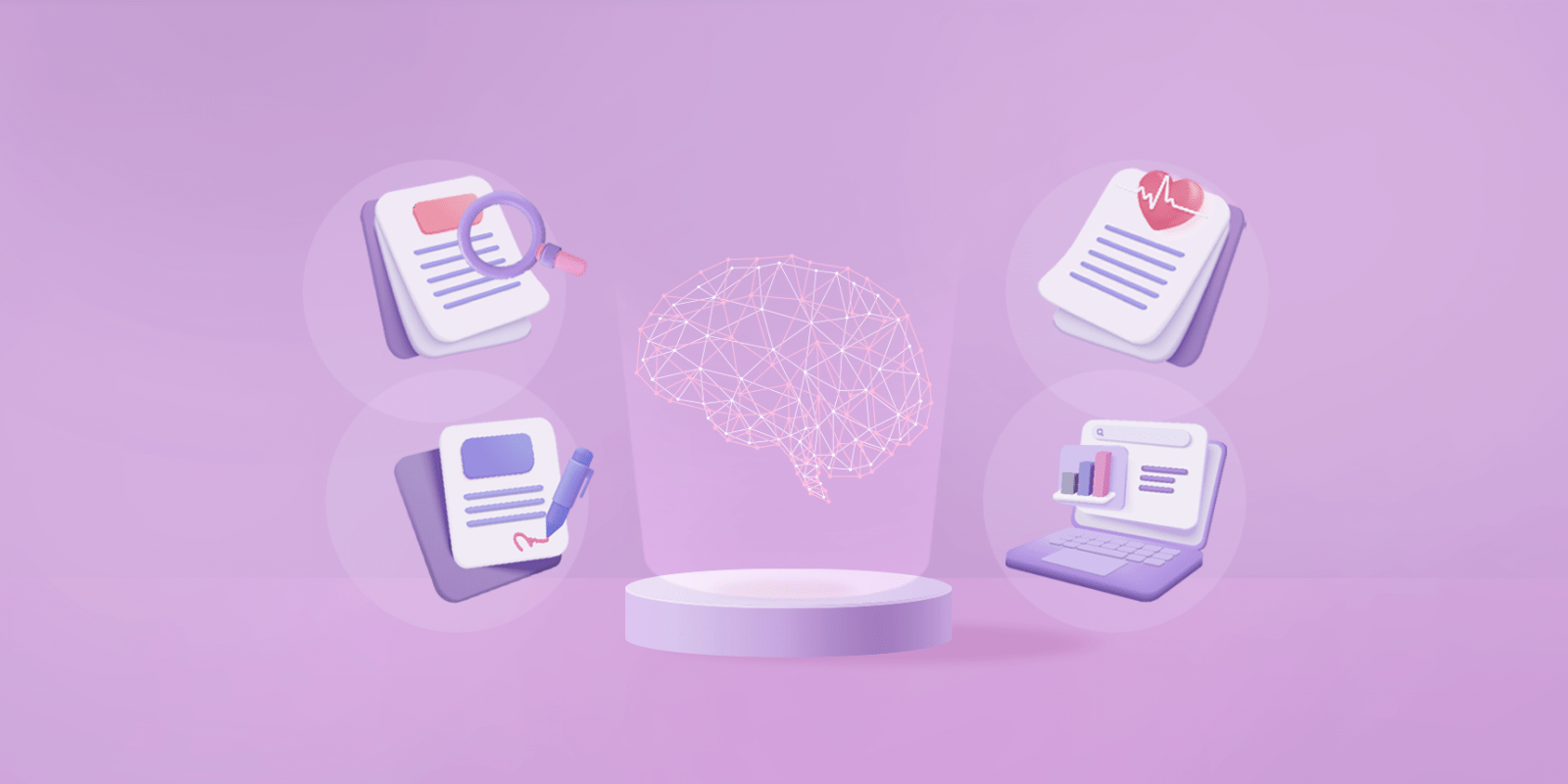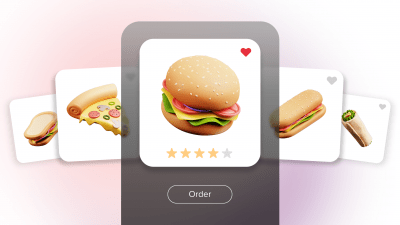Last Updated on: 26th May 2024, 07:52 pm
When we think about data in the modern world, our thoughts often land upon the famous line from the Rhyme of the Ancient Mariner, “Water, water, everywhere, but not a drop to drink.” Just as ancient sailors could be surrounded by undrinkable ocean water, today we’re drowning in so much data that it can become impossible to leverage its power. Well, it’s impossible without the right tools in any case. As the amount of data we collect has grown, we’ve developed tools that can help us analyze this information and turn it into something useful. The most powerful of these tools is undoubtedly Deep Learning. To understand why, let’s take a look at some of the top Deep Learning applications.
In this article, you will learn:
- What Deep Learning is and how it’s used
- Deep Learning applications for MarTech
- Deep Learning examples for other industries
- How Deep Learning is used in retargeting
Table of Contents:
- What is Deep Learning?
- Different Deep Learning applications
- Other Deep Learning examples
- 8. Chatbots
- 9. Driving assistance systems
- 10. Fraud detection
- 11. Cancer screening
- 12. Weather prediction
- 13. Virtual Assistants
- 14. Visual pattern recognition
- 15. Automatic translation services
- 16. Entertainment & recommendations
- 17. Creating AI Videos
- 18. Fake news detection
- 19. Content moderation
- 20. Space Travel
- Deep Learning will continue to find new applications
- Learn more about Deep Learning & retargeting
What is Deep Learning?
Before diving into specific applications, let’s take a look at what Deep Learning actually is. Deep Learning is a subset of Machine Learning, which is itself a subset of Artificial Intelligence more broadly. Like Machine Learning, Deep Learning is able to understand large amounts of data and provide insights or recommendations based on it; however, it is far more flexible than any traditional Machine Learning model.

Why? Well, Machine Learning requires significant ongoing guidance and programming from developers to apply statistical models and analyze data, necessitating specific instructions on what to learn and how to learn it. In contrast, Deep Learning only requires this intense level of support during the initial setup and training by developers and can then autonomously discern and learn from data patterns without being explicitly programmed to recognize each new feature or pattern it encounters. You can check out this article on Machine Learning vs Deep Learning if you’d like to know more.
Deep Learning is designed to process data using a neural network, similar to the way that our brains function. It is more complicated to design, but it is able to generate much more sophisticated insights from any kind of data, even unstructured datasets. Additionally, unlike Machine Learning, it is able to learn from inputted data and adjust its own rulesets without any human intervention. This allows Deep Learning solutions to react to new data and become smarter the more often they’re used.
This has proven to be revolutionary in fields ranging from marketing to medicine, and every day we are seeing more and more Deep Learning applications come to life.
Different Deep Learning applications
There are many different Deep Learning use cases, and we actually know quite a bit about developing them. Since 2017, RTB House has been using Deep Learning at all levels of the advertising process.
Deep Learning, much like the human brain, has the incredible capacity to continuously improve with each task it undertakes. However, what sets Deep Learning apart is its ability to perform an astounding number of calculations within milliseconds, a feat that would take a human a lifetime to accomplish.
RTB House harnesses these cutting-edge algorithms to enhance the accuracy of estimating click-through rates (CTR) for clients, ensuring the most efficient and effective ads are delivered. Additionally, our recommendation mechanisms are fine-tuned using these algorithms. Finally, it’s paramount to achieve the most precise estimation of conversion rates (CR) and value (CV), and the extensive data spectrum processed by Deep Learning is the key to making the campaigns more successful.
~ Philipp Neubert, Sales Director at RTB House
Before diving into the wider applications of Deep Learning, let’s take a look at Deep Learning in marketing.
1. Retargeting
An effective retargeting campaign requires processing a massive amount of data, often unstructured data. This makes it an area where Deep Learning solutions can really shine. By combining, comparing, and analyzing a series of different datasets, our Retargeting solution is able to accurately determine what content to display to a user during a retargeting campaign in order to drive conversions.
This is particularly useful for companies that operate in multiple languages and multiple markets. For example, RTB House was able to help ABOUT YOU double revenue with a successful Deep Learning-driven retargeting campaign. Our campaign was tailored to ABOUT YOU’s attribution model and helped to support several first-time expansions into new European markets during critical launch periods.
2. Natural Language Processing
One of the most important aspects of advertising placements is context. The tricky part is determining what context makes sense for what advert. This is where Natural Language Processing (NLP) comes in. NLP refers to a branch of AI that gives computers the ability to understand text and spoken words. The most well-known example is probably ChatGPT.
NLP combines computational linguistics (rules-based modeling of human language) with Deep Learning models. This enables computers to understand its full meaning, including the speaker or writer’s intent and purposes. NLP has many uses and underpins many different types of technologies.
For example, we use NLP as the building block for our brand safety Solution.
3. Brand safety
Brand safety is the top priority for many brands. By avoiding placing their content alongside potentially damaging material, brands reduce the risk of a campaign backfiring and ensure that their content is always aligned with their brand image goals.
However, maintaining this level of control in an environment with hundreds of thousands of potential publishers is incredibly challenging. If a brand restricts their publications partners too tightly, they risk losing reach, and if they are too liberal, they risk their brand appearing alongside negative content.
RTB House solves this by using Deep Learning powered NLP. First, data is collected from around the internet. This includes entire websites, URLs, titles, and other types of metadata that can help determine a topic. The collected data is then interpreted in order to categorize websites and determine whether they are appropriate for that specific brand. This is a great way for brands to automatically protect themselves while still retaining appropriate reach.

4. Contextual targeting
Another area revolutionized by Deep Learning is contextual targeting. Like brand safety, this solution relies on using NLP to understand the context of a specific publisher and determine the most appropriate ads to place there. This targeting methodology is particularly useful for cookieless personalization and will become more commonly used in the near future.
At RTB House, we use our own context AI to scan for all forms of inflection in 41 languages, covering 95% of the internet in real-time, which translates to 1.5 million articles scanned every hour in over 40 languages. This ultimately enables us to determine granular contextual targeting, including phrases and inflection, to build contextual audiences of users interested in specific topics. This approach is able to bring up to 50% more value within the same marketing budget compared to legacy solutions.

5. Prospecting
Moving away from NLP, another area where Deep Learning has proven valuable is prospecting. Prospecting refers to a specific retargeting methodology where the advertiser focuses on potential customers who have not previously made a purchase but are showing signs of intent. If these users are not targeted quickly, they are likely to be lost to a competitor, as they would not fall under the scope of typical retargeting campaigns.
While prospecting is possible without Deep Learning, it was challenging to interpret the sheer volume of data, and many potential customers would have been missed. Deep Learning analysis makes it easier to identify customers who have shown interest and determine the right kind of content to show them.
6. Branding campaigns
When we think of branding, our minds often turn to Mad Men-style scenes of fast-talking men in suits pitching billboards. Branding is still as important now as it was in the days when newspapers were the most common source of information, but now, instead of a gut feeling, we rely on data collected about consumer interests.
A modern branding campaign will be able to use Deep Learning to analyze numerous data points and determine what aspect of a product or service is most likely to appeal to a user. This is then used to determine what creatives to display and the most appropriate place to display them, which is a brilliant way for brands to stand out and build brand awareness in a very crowded media environment.
7. Video campaigns
Another way that Deep Learning has been hugely impactful is video marketing. As consumers increasingly spend time on video streaming sites, video ads have become a key way to keep them engaged. Deep Learning helps to determine what type of videos to display to users and when.
Video marketing is a powerful communication tool and seems to be a natural choice for branding campaigns. It’s all about determining what you want to achieve, what message you want to convey, to whom, at what moment, and at what frequency. Once you know those answers, planning your next step becomes a breeze.
For example, Deep Learning can help determine which sort of ad will work best for in-stream content based on the context of the video being displayed. For example, if there is a video about extreme mountain climbing, DL may determine that a post-roll ad showing mountain safety gear is a good choice.
Additionally, by using Deep Learning, it is possible to identify good opportunities for out-stream video ads. These kinds of video ads are placed alongside static content and are a way to quickly capture user attention with movement; however, they need to be placed intelligently in order to avoid annoying specific users. Deep Learning is a good way to determine when these kinds of ads are likely to be effective.
Other Deep Learning examples
Aside from marketing, Deep Learning has found its way into a variety of other tools. Many modern professions need to work with large amounts of unstructured data, which means there are many interesting Deep Learning applications that have been developed.
Let’s take a look at some of the most interesting.
8. Chatbots
Natural Language Processing (NLP) isn’t just useful in a marketing context. When ChatGPT was first introduced, it broke records by becoming one of the most rapidly adopted applications in history. Users were astounded by the almost human responses it was able to give, and its creator, OpenAI, captured the world’s imagination and sparked something of an AI renaissance.
This was made possible thanks to Deep Learning. OpenAI used Deep Learning to train the model’s transformer architecture, which enables ChatGPT to understand text and generate coherent, naturally flowing responses.
ChatGPT showcased that chatbots can be terrifyingly versatile, although they still remain very impactful in customer service situations. However, chatbots are also useful in marketing. This could include some kind of presales chat to help customers quickly find answers to common questions, but it could also become an important part of a company’s marketing pipeline. For example, chatbots can collect initial customer details, qualify leads, and even schedule meetings.
9. Driving assistance systems
We’re still a while off from building truly self-driving cars, but Deep Learning is already being used in advanced driving assistance systems1. A key challenge for any kind of driving assistance system is understanding both road conditions, and signage.
These signs are built for humans, so we find it easy to quickly identify, but it’s a big challenge for computers. Generally, cars will use cameras to collect information about the road, but these images are rarely perfect. The angle will often be bad, and poor weather conditions can have a significant impact on overall accuracy. Standard Machine Learning algorithms would struggle to adapt to this, but Deep Learning is able to overcome many of these challenges.
Why? Well, Deep Learning solutions tend to be better at dealing with imperfect data. They can discern and generalize patterns from vast and varied training datasets, which allows them to navigate through and make predictions even with imperfect data, outperforming traditional Machine Learning algorithms that might struggle in these scenarios. Consequently, Deep Learning plays a pivotal role in refining Driving Assistance Systems, progressively propelling us toward fully autonomous driving.
This process highlights just how reliant we are becoming on powerful Deep Learning algorithms. Imagine what would happen if a bad algorithm was used and mistook a priority crossing sign for a stop sign! This is why it’s important for companies to take Deep Learning seriously and make sure they’re using tested algorithms for the right job.
10. Fraud detection
Fraud has become one of the biggest challenges facing regulators today. In 2022 alone, customers reported 2.4 million cases of fraud to the Federal Trade Commission (FTC)2. It is challenging to deal with, as many of the victims are unaware that the fraud has taken place until well after the fact.
Somewhat ironically, Artificial Intelligence might actually be making criminals better at their “jobs.” NLP is helping to make it easier than ever to craft phishing emails. Deepfakes mean that any celebrity endorsement could now be a fabrication, and scammers can even automate their fraudulent transaction pipeline in the same way that businesses automate their sales pipelines.
One way to help combat this threat is to use Deep Learning to detect anomalies in user transaction data. For example, a company can use a combination of device location, historical purchasing patterns, and common fraud indicators to identify a customer acting strangely. Once the algorithm flags a problem, the user can be challenged to prove who they are, and their line of credit can be temporarily frozen.
This can ensure that users are not stuck with big bills for purchases they didn’t make and increase the risk of a fraudster being caught.
11. Cancer screening
One of the big challenges for physicians is catching cancer before it becomes untreatable. Early diagnosis results in significantly improved patient outcomes, and screenings are increasingly encouraged. However, healthcare resources are limited, so a technological solution can make it easier for physicians to quickly identify potential symptoms and take appropriate action.
Deep Learning is uniquely well suited to this3. One common use is to analyze images taken by MRIs, and highlight anomalies requiring further investigation. This approach has already proven effective in detecting and treating cases of lung cancer.
Additionally, Deep Learning has been used to help to develop new types of drugs. Deep Learning was used by MiT scientists to identify a new drug4that is capable of killing many varieties of antibiotic resistant bacteria.
12. Weather prediction
Your weather forecast might be about to get a little bit more accurate. In the past, weather forecasting systems have used the numerical weather prediction (NWP) method, which is relatively accurate but computationally quite expensive. Previous attempts to use Artificial Intelligence proved to be less reliable than NWP, but that has begun to change with Deep Learning.
By using 39 years of historical weather data, researchers were able to build a Deep Learning solution called Pangu-Weather5, which was able to produce more accurate weather forecasts than most established forecasting methods.
This doesn’t just mean that you won’t get caught by the rain in the future. Better weather predictions could help countries prepare for extreme weather events and help save many lives in the future.
13. Virtual Assistants
Whether you prefer Alexa, Siri, or Google Assistant, all the top virtual assistants work thanks to Deep Learning and NLP. While early versions of Siri famously struggled with the Scottish accent, as these assistants have gathered more and more voice data, they’ve become increasingly able to understand their users. This capability can also be used to take notes for you, or to make appointments on your behalf.
In addition to this, virtual assistants are able to use Deep Learning to learn more about their user’s preferences. For example, it might be able to provide better dining recommendations by understanding what sort of cuisine you like or recommend new songs that you are likely to enjoy.
14. Visual pattern recognition
“If a Deep Learning model is provided with sufficient and relevant data, it can learn how to identify specific types of images, enabling it to recognize similar patterns in new, unseen images.”
Another key Deep Learning use case is in visual pattern recognition. If a Deep Learning model is provided with sufficient relevant data, it can learn how to identify specific types of images, and is even able to recognize similar patterns in new, previously unseen images. Let’s say that you want to determine what type of watch your grandfather has gifted you from his old collection. Well, you might be able to upload a photo of the watch online, and search for similar images, helping you to identify the model of the watch.
This doesn’t just extend to image searches. Visual pattern recognition is a key tool for facial recognition. This enables users to open their smartphones without pressing a button and could become an important way to make our world safer.
Interestingly, facial recognition is also a good example of what happens when researchers use limited datasets. Current models are very good at identifying Caucasian faces, but struggle when confronted with faces of people from other ethnicities. This is believed to be down to the datasets used to train the models, which predominantly use photos of Caucasians. A Deep Learning solution is only as good as the data it is fed.
15. Automatic translation services
Google Translate is a key tool for the travelers among us, and Deep Learning has helped expand our translation capabilities. The technology is able to not just perform real-time translations, but help translate text found in photos or provide real-time translations as you watch a film or hear someone speak.
As translation outcomes improve, it should become easier than ever to globalize access to the internet. This will reduce a key barrier to entry for many people by making it possible to use the internet without needing to know the English language and allowing businesses and publications to connect with users all over the world.
16. Entertainment & recommendations
Have you ever wondered how Spotify is always able to find that perfect new song? Well, it’s thanks to Deep Learning. Companies are able to use information about the content you most engage with in order to help you find new creators and artists that you will want to engage with.
This is useful for a number of reasons. Not only does it help to ensure you’re not wasting your time with content you won’t like, but it also helps to support creators by allowing them to connect with an audience that they wouldn’t be able to reach outside the platform.
17. Creating AI Videos
One major Deep Learning application is the creation of AI videos. These videos, often called “deep fakes,” are able to use previous video and audio content in order to create new and compelling video content. For example, if you love South Park, there is an application that will enable you to create your own episodes using Deep Learning6.
The good side of this is that in the near future you might be able to create your own episodes of classic TV shows. However, there is a darker side to AI video creation. Due to the sheer volume of available social media and news content, it is possible to produce sophisticated videos of politicians and celebrities saying or doing things that never happened. This could threaten to pollute the information sphere and make it challenging to tell fact from fiction. That is where our next Deep Learning tool jumps in to save the day.
18. Fake news detection
While fake videos are often very convincing, they will generally have some signs that all is not as it seems. However, humans are not always very good at spotting deep fakes, even if they believe they can. Deep Learning can help to highlight potentially fake content and place a disclaimer on it7. This could help users know what content to approach with more caution than they would normally do so. The sad truth is that while technology is improving, human nature remains the same, and the race between security services and criminals will remain the same, even if the tools they use become more sophisticated.
To help ordinary users navigate this, Deep Learning can be used to categorize sources that seem to be overly biased or are relying on terminology often associated with fake news. This will make it easier for users to understand what sort of media they’re consuming and make more intelligent choices.
19. Content moderation
Another major challenge for media providers is content moderation. Today, Google, Meta, and others employ thousands of people to scroll through content and remove anything that breaches terms of service. This often exposes innocent people to violent and abusive content and takes a significant toll on their overall mental health.
Deep Learning tools can be used to identify obviously harmful content, and immediately remove it, and flag any edge cases or disputes for further review by a human moderator8. This would not only reduce the mental burden on the moderators, but also provide a significant cost saving for many companies while ultimately making the internet a safer place.
20. Space Travel
This might sound a bit out of this world, but Deep Learning is already becoming a central component of space travel and the space industry more broadly. Properly identifying celestial objects and plotting their courses requires understanding a vast amount of information, and Deep Learning can make it easier for human scientists to properly plot the optimal course of any space assets that they want to deploy9.
For example, the European Space Agency’s (ESA) Advanced Concepts Team is actively looking at ways to implement Deep Learning into automatic landing systems and other automated systems for new spacecraft. Additionally, the Mars Rover uses Deep Learning to navigate the red planet.
In the long term, Deep Learning could play a key role in the search for intelligent life by interpreting the various signals we have received from distant planets. By carefully searching this information, it will make it easier for us to identify areas of the galaxy that we should pay the most attention to.
There are many possible applications of DL, including automatic landing, intelligent decision-making, and fully automated systems. ESA’s Advanced Concepts Team (ACT) is very active in this area.
Deep Learning will continue to find new applications
These are just a few of the potential applications of Deep Learning. Due to their innate flexibility, Deep Learning models are useful for any industry that needs to understand large amounts of complicated data. This will make it a driving force behind many new companies, and it is likely that the number of Deep Learning use cases will significantly increase over the next few years.
Learn more about Deep Learning & retargeting
Companies that embrace Deep Learning are already gaining a significant leading edge over their competitors. This could include implementing Deep Learning applications into your business processes, or it might mean partnering with a retargeting provider who can help you take your ad budget just a little bit further.
At RTB House, we use Deep Learning to power our entire advertising process. This helps us better understand your customers, craft ads that will wow them, and deliver them at the perfect moment. This helps to reduce your ad waste and build a better relationship with your customers over the entirety of the purchasing journey.
If you’d like to learn more about how we use Deep Learning to create better retargeting campaigns, schedule a call with our team today.
- See more: https://link.springer.com/article/10.1007/s11042-023-14823-1 ↩
- See more: https://www.ftc.gov/reports/consumer-sentinel-network-data-book-2022 ↩
- See more: https://breast-cancer-research.biomedcentral.com/articles/10.1186/s13058-023-01687-4 & https://synapse.koreamed.org/upload/synapsedata/pdfdata/0130hmr/hmr-37-71.pdf ↩
- See more: https://news.mit.edu/2020/artificial-intelligence-identifies-new-antibiotic-0220 ↩
- See more: https://www.nature.com/articles/s41586-023-06185-3 ↩
- See more: https://opendatascience.com/new-app-creates-short-episodes-of-south-park-using-generative-ai/ ↩
- See more: https://www.nature.com/articles/s41598-023-34629-3 & https://www.sciencedirect.com/science/article/pii/S2589004221013353 ↩
- See more: https://www.theregister.com/2023/08/16/gpt4_moderate_content/ ↩
- See more: https://www.esa.int/Enabling_Support/Preparing_for_the_Future/Discovery_and_Preparation/Artificial_intelligence_in_space & https://www.nature.com/articles/s41550-022-01872-z & https://www.azom.com/news.aspx?newsID=57311 ↩





